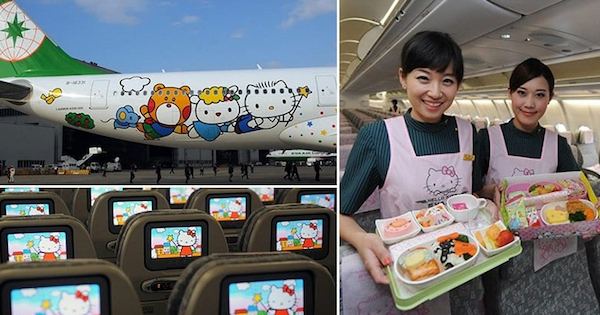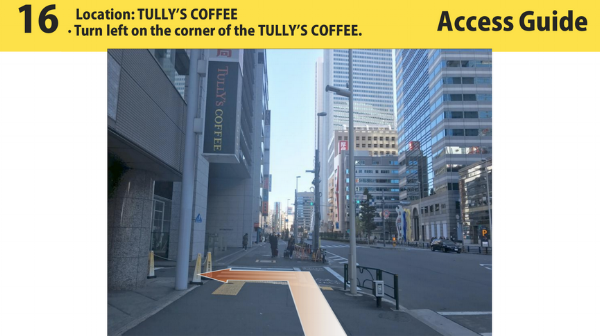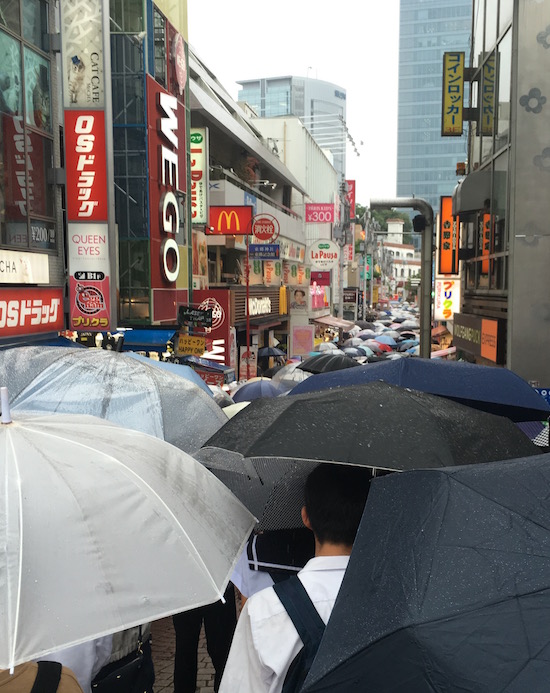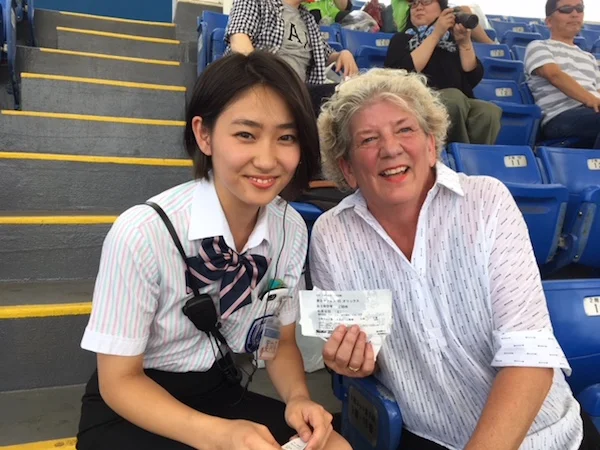On the morning of June 18th, I was sipping my first cup of coffee while Michael was folding the futons in our Airbnb in Kyoto. The jolt I felt wasn’t from the hit of caffeine - it was from an earthquake!
We made wide-eyed contact and then hit the floor under our tiny dining room table. The quake only lasted for about 30 seconds - but it seemed like forever. We were on the 8th floor and could feel the building sway, and hear things rattling around, but the scariest part was both of our phones began blaring sirens and alerts in Japanese. It made it seem worse than it was.
We carefully got to our feet and assessed the situation. My coffee had sloshed and a few pictures were skewed, but there was no visible damage to the apartment - the only things still shaking were the two of us! At that point, we didn’t know any details but soon found out the 6.1 magnitude quake was centered 35 miles away in Osaka. A city we were scheduled to visit in just a few days.
I'll get back to the aftermath and how it affected on our travels later on. Meanwhile, here’s a summary of our time in Tokyo and our first of two separate visits to Kyoto.
We arrived in Tokyo on June 6th from Seoul on JeJu Airlines. a discount Korean Airline with a cute name - just like so many things in Korea. It was our 48th airline. They all seem to get off the ground, so as long as I could keep hauling my 23 kilos of worldly possessions I didn’t mind who we flew with. Although I would have loved to have a seat on Eva Air’s Hello Kitty airplane.
Somehow, being from Seattle, I thought we might have assimilated enough Japanese culture that we’d just arrive and feel right at home. But that wasn’t the case - and even our previous weeks of Asian travel hadn’t prepared us for Tokyo. It was big. It was bustling. And its clockwork rhythms didn’t allow for much interference from outsiders.
Thankfully Satomi, our first Airbnb host in Tokyo gave us the equivalent of a Japanese restaurant menu with pictures as a guide to finding her apartment. She sent us 30 different images of what we would see from the moment we entered the arrivals hall of the airport to final a close-up of the mailbox where we’d find the keys, to what to expect inside. Without her painstakingly detailed instructions we might still be wandering the streets of Tokyo.
Michael had downloaded everything she sent to his iPhone, so if we didn’t have cell service, we would still be able to find our way. The only challenge was the pictures of the neighborhood were taken during the day, and we arrived at 10:00 pm, so we ended up searching for landmarks in the dark.
Now, this is an area where our skills cross over perfectly. Michael is a trust-your-instruments kind of guy. I am a seeker of the Shiny Squirrel. I like visuals. I like puzzles. So, together we used Satomi’s visuals and Google Maps to plot how to get the train from the airport into Tokyo, and from the train to the metro and finally to Shinjuku, our new neighborhood.
But once we were out of the metro Satomi’s photos became a delightful scavenger hunt. I take pride in getting us down some tight side streets, spotting the vending machine landmarks, making a left at the blue P parking lot sign, crossing a tricky intersection, darting down a dark alley (sharp right at the white gate with an owl statue), and finally to the front door of our building where we found the mailbox and claimed the golden key! Level 10 stuff.
We slowly pushed open the front door of our apartment - not knowing what we’d find. It was so small, that once you crossed the threshold you were already halfway through the kitchen and could easily jump into bed. In fact, the place was so small, we ended up setting our bags outside on the landing when we were using the kitchen. We also encountered our first Japanese toilet - a device that takes a trip to the bathroom to a new level. They offer some amazing features that include a warm toilet seat, different gender appropriate water jets, “white noise” or music as needed, a gentle air dry and, in our case, offered another “room” in which to retreat. Once we settled in, we found the space to be efficient and perfect for those who are rarely home.
Our little Tokyo nest. Unfortunately, this place is not available at the moment.
We also discovered we’d ended up in a very coveted section of the Shinjuku District. Our little neighborhood turned out to be a rarity where many of the minuscule homes have pocket patios overflowing with hydrangeas and are interspersed with well-kept low-rise apartments and tiny shops, all connected by a warren of inviting walkways. And, we were within easy walking distance to central business district one direction and brights lights and nightlife in the other. Unfortunately, the listing is currently not available (see below) so I can't provide a link.
Our first week in Japan’s capital city rushed by, but we found our feet and were able to get the most out of our time there - we certainly weren’t going to be lounging around in our apartment - or should I say compartment, so we hit the streets.
Our first foray was to the Airbnb office and it gave us some insight into the challenges of finding an address in Japan - even they say it's archaic. The office was just under a mile away and so we decided to walk and set out with confidence - and we even got within a few feet of our team navigator’s Google Map Pin, but it still took a stranger and a helpful person behind the counter at a 7-11 to get us to the actual front door of the building.
Tokyo is jam packed and colorful signage dominates the landscape - but there was plenty of room for trees and pocket parks throughout the city.
During our stroll, I was taken by how clean the city is - although I expected that. And then how much thought was put into green spaces and making the city comfortable for humans. All through the CBD, there were trees and small pocket parks with benches in the shade. And I also noticed that the Japanese do not, I repeat do not, Jaywalk. Instead, they politely line up at the intersections and wait for the light - and even then bow and offer you the chance to go ahead. Same thing at train stations. No rush, no pushing, just polite waiting for those on the train to get off and then taking turns getting on board. It was refreshing, and a reminder that good manners beget good manners.
Always happy to be greeted with Krispy Kreme donuts.
Once we found the Airbnb office, as always, we had a warm welcome. However, most of the staff was distracted by a new ordinance in Japan that wiped 80% of their listings off the platform just days before we arrived. It was something we experienced personally, as our upcoming listing in Osaka was canceled. Also, as a result, we had challenges finding places to stay in the cities we’d planned to visit.
Airbnb did a good job of mitigating the situation with generous credits for those who lost bookings, and we watched the staff on the groundwork diligently to plan a “relaunch” under the new guidelines that require hosts to register their homes as limited, short-term listings and pay additional taxes.
We do our best to stay out of the politics, but we do want to reiterate the founding principle of Airbnb, “That you can belong anywhere” is still the guiding light for our travels. And, while we aren’t staying in hotels, we are definitely contributing to the local economy by buying food, transportation, SIM cards, attending events and attractions, and dining out. So we believe a city benefits from the home-sharing economy. Hopefully, when the dust settles, there will be room for everyone.
As we moved around the city, we found the metro system to be very efficient. Especially once we realized every line had a color and every station had a number (so no need to memorize the Japanese name). And, as always, we took a couple of free walking tours that all helped orient us to the city.
Highlights included a trip to the Edo Museum filled with incredibly detailed dioramas of life in 14th century Japan, the Imperial Palace and the surrounding gardens, a tour of the Akihabara district where Anime got its start, a tour of the Meiji Shrine in Yoyogi Park (in the pouring rain!) and a trip down famous Harajuko street where we clashed with umbrella-wielding tourists and teenagers determined to purchase the latest “anything”. We also found a two-story Cat Cafe and a Bunny Bar where people can cuddle their troubles away.
Perhaps the best day of all was spent at the ballpark watching the Tokyo Swallows take on Orix (Ichiro’s former team). When we arrived at the stadium we found the game was sold-out. It was our only chance to watch Japanese baseball, and Michael was determined we wouldn’t just walk away. We quickly learned that scalping goes against Japanese culture, so we didn’t see anyone waving tickets around.
Undeterred, his sports-promoter instincts kicked in! After further scouting of the situation, he spotted a man in a suit who looked like he might be a club executive and struck up a conversation. I couldn’t hear every word of the conversation, but I caught “Ichiro, Seattle, Senior Nomads, Airbnb, VIP, blog, etc.” Whatever he said worked!
The man produced two complimentary tickets and a woman whisked us behind the guard rails and escorted us to great seats where we sat amongst the player's families. Well done Mr. Campbell! The game was good - but the atmosphere was even better. The Swallows have a tradition of unfurling umbrellas and raising them up and down to exuberant cheers and music whenever the team needs a boost. The beer was flowing from pony kegs carried on the backs of oh-so-cute girls, and the cheerleaders were tireless. It was a very memorable afternoon.
We took the plunge and bought Japan Rail passes ahead of our arrival. Michael wasn’t sure they were worth the $500 each we invested because we could have easily stayed in Tokyo and nearby Kyoto the entire three weeks, but they pushed us to go further out, and that really made a difference in our experience.
They were easy to use, and in the end, we're glad we bought them. Even with Airbnb listings vanishing as fast as we searched, we were able to rework our itinerary and found some great places to stay in Kyoto, Hiroshima, and Fukuoka. We also took some lovely day trips to the deer park in Nara, the Bamboo Forest in Arashiyama, and the stunning Fushimi Inari Shrine. Then there were longer day trips to Osaka and Kobe. I will write more about those travels in the next blog.
Michael entering the pathway lined with 1,000 Tori Gates at the Fushimi Inari Shrine.
Many of Japan's train stations could be end-destinations in themselves, some have enticing malls with hundreds of shops and restaurants. Even the smaller stations had pristine sushi bars, a few shops where you could buy the all-important, and beautifully wrapped Omiyage (gifts that must be purchased for hosts, coworkers, and friends for multiple reasons), and fanciful socks (since you are always taking your shoes off in Japan!) And of course at least two convenience stores.
I will never think of 7-11 in the same way again! That brand, along with Family Mart and Lawsons were everywhere. Convenience stores are not the trashy "beer and and bad nachos" sort of place we are used too. In Japan they are the ideal place to grab delicious fast-food along with whatever else daily life might require. I became addicted to sticky rice cakes, crispy chunks of freshly fried chicken, and pillowy-soft, egg salad sandwiches. And the customer service is a marvel.
After a week in Tokyo we moved on to Kyoto - a city that most everyone we talked to declared was their favorite city in Japan. You can now add us to the list! We found a great Airbnb right near the train station and we were able to zip around the city and beyond very easily.
It seemed that Japanese men didn't shake off their school uniform look. It was all white shirts and dark pants, while the ladies were imppecibly stylish.
We especially enjoyed an outing to one of the cities largest flea markets on the grounds of the Hyakumanben Chioji temple. We got a little confused by the bus schedule so we arrived just as the market was packing up (although I still snagged a fun hat) - but the more interesting experience happened inside the temple itself. We could hear exuberant chanting and drum beats from a ceremony inside so we quietly approached the doors to have a peek. But instead of observing discreetly from the outside, we were quickly ushered inside to participate!
Happy with my hat!
We slipped off our shoes and squeezed into a circle of around 80 worshipers perched on their knees. They were methodically passing a huge Buddhist "rosary" or JUZU beads made of 1080 wooden beads the size of lemons through their hands while chanting “Nenbutsu-Namu-Amidabutsu”. Once we got into the flow it was mesmerizing - of course, we had no idea what we were a part of, but it was definitely mysterious, mystical and a soul-satisfying experience.
An image showing the ceremony we took part in at the Chionji temple.
When it was over, Michael approached a woman who sat near us that spoke some English. She too was invited to join and was curious to learn more about the ceremony. This is what she learned and then shared with us. Hyakumanben Chionji refers to the million times some 14th-century priests chanted the Nenbutsu using similar beads to halt a deadly epidemic. It is performed in the temple on the same site on the 15th of every month. We were in the right place, on the right day.
While we were in Kyoto we also got serious about trying Japanese foods including ramen, okonomiyaki, takoyaki, sushi, teriyaki and of course, the occasional bento. Of those, sitting at the counter of an okonomiyaki restaurant watching the cooks blistering food right on the griddle in front of you, and then pushing to right up to the edge for you pluck off the hot surface with your chopsticks is a worthy dining experience. We also found an English Pub that offered good old-fashioned pub food and better yet, served up World Cup matches.
That's my steak being seared a just a foot from my seat - Michael multi-layered omelette is in the background. This was a really fun and affordable way to eat.
There were also many restaurants where you ordered your food from a screen outside and handed your slip to the server once you found a seat. Minutes later, steaming Ramen or a colorful Bento Box arrived at your table - just how you ordered it on the screen.
I think a visit to Japan is a sort of cultural benchmark. Maybe even more so for those of us that live on just across the way in the Pacific Northwest, where we share a location along the “Rim of Fire.” If nothing else, we can share earthquake stories.
Which brings me back to Kyoto. The day before the earthquake hit, we had taken a day trip to Kobe. It’s a lovely city and we enjoyed our time there, but one of the “must-see” destinations for us was The Great Hanshin-Awaji Earthquake Memorial Disaster Reduction and Human Renovation Institution. Try giving that to a taxi driver! This modern complex is dedicated to education about the 6.9 Great Hanshin Earthquake that centered there in 1995 and it’s aftermath, but more importantly how Japan is working to prevent such a tragedy in the future. We also learned about earthquake preparedness and even sat through a simulation with surround sound.
So how ironic was it that the very next morning we would experience the strongest earthquake since Fukushima in 2011! After we stood up and determined it was over (for the moment), we prepared to leave our apartment and carry on with our plans to go to Hiroshima. Our bags were packed so we left the apartment to head to the train station. However, the elevator wasn’t working. I suppose an earthquake a few minutes earlier might have something to do with it. So what do we do? We decided to haul our heavy bags and backpacks down eight flights of stairs and head to the train station. We didn’t see any structural damage or panic in the streets so we carried on to the station just a few blocks away.
In hindsight, we should have known that a major earthquake just thirty-five miles down the tracks would have completely shut down the regional rail system - but that didn’t occur to us at the time. We turned the corner and found Kyoto station was a sea of stranded humanity. There were no trains going anywhere, anytime soon - and in fact, probably nothing would leave the station until the next day. Also looking back, we should have left our bags at the apartment and gone to check on the train situation before hauling them all the way down to street level.
Getting back to my initial thoughts about the Japanese. Maybe because earthquakes are a regular occurrence, the unperturbed behavior of thousands of stranded passengers is a common reaction. Or maybe their combined faith in Shintoism and Buddhism (more on that next time), keeps them “Zen”. But because they were calm, we were calm. There was no shouting or panicked shoving. No rush on the information booth, or haranguing the staff who were doing their best to keep everyone updated. Just an orderly readjustment to what life had delivered on that day. Long, orderly lines formed for buses and taxis. Groups of school children who would not be starting their year-end excursions until much later sat on the floor and played card games or shared snacks. If anyone was up in arms, it was the tourists whose carefully laid plans had just been upended like a box of Legos.
Just one of many school groups stranded at the station.
Now that we couldn’t move on to our next destination, what was our plan? Fortunately, we reached our Kyoto host and he generously offered us an additional night at no cost. Our Hiroshima host was also very understanding that we’d be cutting our stay by a night. So, we stopped at the 7-11 for a few comforting snacks and headed back to our building. Of course, we didn't have the elevator, so we left our bags tucked away in the lobby. We walked the eight floors upward - and on our way towards heaven we counted our blessings.
More on our Japan adventures coming up. Thanks for following along!
Debbie and Michael Campbell
The Senior Nomads






















